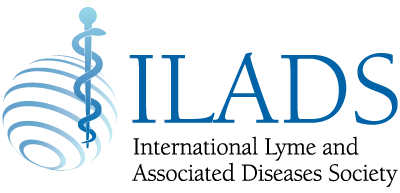ILADS gives Input to NIH on research priorities regarding tick-borne diseases
The NIH is developing a strategic plan to advance tickborne disease (TBD) research and development over the next five years and beyond. This Request for Information (RFI) invited comments and suggestions on the tickborne diseases (TBD) research priorities NIH should continue or adopt over the coming years.
The deadline for submission was March 13, 2019. Here is Dr. Betty Maloney’s submission on behalf of ILADS:
Topic 1 Significant research gaps and/or barriers
Barriers:
1) Terminology. “Post-treatment Lyme disease syndrome”, while mechanistically neutral, is too often used to exclude ongoing infection as a possible causative mechanism of persistent manifestations. The NIH appears to endorse this limited view; a current webpage states: “These patients often show no evidence of active infection and may be diagnosed with post-treatment Lyme disease syndrome (PTLDS).” A different term is needed to avoid perpetuating this cognitive error.
2) Limited perspectives and overt biases regarding TBDs among NIH-funded researchers. Clinicians who treat patients with chronic Lyme disease (longstanding untreated Lyme disease or persistent manifestations of Lyme disease following prevailing antibiotic regimens), patients and patient advocates should be included during each phase of the strategic planning and implementation process. Representatives of these groups should be included on grant panels so as to promote the pursuit of knowledge that will positively impact patient care while avoiding currently held biases. Their input on clinical trial design is necessary to encourage the development of patient-centered clinical endpoint definitions as well as inclusion and exclusion criteria that will produce study populations reflective of community-based patient populations.
The issue of bias within NIH cannot be overstated. Consider: 1) the posted website review of the NIH-funded retreatment trials which supports a specific position (retreatment doesn’t help) rather than give a neutral accounting of the trials’ strengths and weaknesses and the subsequent critiques of their designs, execution and conclusions and 2) the xenodiagnostic study which essentially discounted positive findings regarding the persistence of B. burgdorferi in a patient with persistent posttreatment symptoms. Thus, the need to include participants who will expand the perspective and scientific discussion relative to the strategic plan is clear.
3) Failure to recognize the limitations of available serology-based diagnostics when applied to patients with late neuroborreliosis. Bacon’s 2003 study of the C6 ELISA and Dressler’s 1994 paper demonstrate that ELISA and Western blotting were considerably less sensitive in neuroborreliosis patients than those with Lyme arthritis.
4) Failure to recognize the significant limitations of the previously conducted tick bite prophylaxis and EM trials which undermines their conclusions as this might prevent needed investigations from being funded and conducted.
Gaps
1) Diagnostics: a) the impact of multiple tick-borne infections and immune suppression on the performance of immune markers of infection, b) tests that reliably identify non-EM Lyme disease and distinguish between B. burgdorferi, B. miyamotoi, and B. mayonii infections, c) clinical validity of testing in children, pregnant women and the elderly, d) development of performance panels for test validation that include well-characterized seronegative Lyme disease patients such as those identified by Dressler, Ang and others, and e) understanding why the humoral response appears to differ between neuroborreliosis and Lyme arthritis patients as this might inform the development of other forms of immune-based testing.
2) Understanding the mechanisms that enable B. burgdorferi to maintain prolonged periods of latent infection.
3) Therapeutic trials for untreated disseminated Lyme disease that expand initial therapy beyond 30 days.
4) Therapeutic trials specific to patients with concurrent tickborne infections.
Topic 2 Resources required or lacking that may be critical to advancing TBD research priorities
Required resources
1) Physicians, patients and patient advocates who are able to expand the seemingly limited perspective that NIH researchers and officials have on TBDs.
2) Adequate funding for TBD research that is on par with the incidence and significance of this group of illnesses.
3) Adequate funding for the acquisition of thorough disease surveillance data.
4) The Tick-borne Diseases Working 2018 report to Congress which outlines the panel’s findings and research priorities.
Comments (Why ILADS’ perspective is important)
ILADS’ perspective on the NIH’s strategic plan for tickborne diseases research is important to consider because ILADS is the only multi-specialty medical society in the U.S. that is dedicated to the appropriate diagnosis and treatment of all forms of Lyme disease (including chronic Lyme disease) and associated TBDs. ILADS members care for patients with complex cases of Lyme disease which are often complicated by concurrent tickborne infections. The collective experience and insights of these clinicians are valuable and need to be considered.
